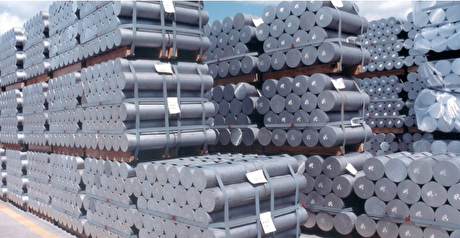
US heating oil falls below VGO as refiners cut output

US Gulf coast high-sulphur heating oil has been trading more than $10/bl below low-sulphur vacuum gasoil (LSVGO), marking the steepest discount since December 2015. High sulphur heating oil has been largely phased out for US heating, but it continues to be produced for export and blending.
Heating oil typically trades at a premium over VGO, as it is processed further and has a much lower sulphur content, 2000ppm as opposed to 5000ppm in LSVGO. It can substitute for VGO as a feedstock for fluid catalytic cracker (FCCs). In a balanced market, VGO prices can sometimes reference the bottom for heating oil.
But these days, heating oil is maintaining deep discounts to VGO, because refiners are not looking for the cheaper feedstock. Instead, refiners are reportedly focused on cutting FCC runs or shutting them altogether to avoid producing more gasoline in an oversupplied market running out of storage.
This is despite heating oil yielding more distillates, as much as 40-45pc, when processed through the FCC in combination with VGO. VGO typically yields 30pc distillates and 70pc gasoline out of an FCC.
Diesel has remained the higher margin product through the downturn induced by Covid-19 mitigation efforts. In the early days of the pandemic, demand for diesel held relatively stable amid continued commercial trucking deliveries and agricultural demand. In early April, demand fell to its lowest level in more than 20 years at 2.8mn b/d, and has remained relatively low even after a small rebound.
Still, diesel margins have remained positive, while gasoline margins have frequently dipped in and out of negative territory over the past two months. As onshore storage fills up, more gasoline producers and traders are looking to costly clean tankers for floating storage, making the fuel as expensive to store as it is unprofitable to produce.
Running high-sulphur heating oil through the FCC will still yield more gasoline than diesel, and at this point, refiners are not looking for the marginal diesel barrel as they ramp down overall production.
Most Gulf coast refiners have cut runs by at least 20-30pc over the past few weeks as they try to avoid fully idling, which is costly in financial, environmental and safety terms. Some refiners are heard to be considering completely shutting FCCs or keeping them out of circulation for extended maintenance.
Going forward, heating oil is likely to maintain a deep discount to VGO, mostly because VGO has several streams of end use, including blending into low-sulphur fuel oil (LSFO) compliant with the 0.5pc maximum sulphur limit from the International Maritime Organization (IMO).
VGO has been streaming into the IMO blending pool for the past few months as refiner demand for FCC feedstock waned. The VGO grades suitable for bunker fuel blending include those with API ranging from 18-21 and maximum 30 pour. The pour value indicates paraffin content, a key specification for bunker fuel.
While domestic demand for LSFO has been low, there has been export interest for US VGO going into the bunker fuel pool in Asia and the Caribbean.
US Colonial pipeline heating oil has averaged $9.34/bl below Gulf coast LSVGO barges over the past week, compared with a $0.18/bl premium during the week prior. The discount peaked at $10.11/bl on 24 April, the widest since December 2015.
Heating oil's discount to LSFO also widened over the past week to an average of $8.33/bl, down from $3.52/bl the week prior. Heating oil is not a typical feedstock for cokers, for which LSFO is primarily in demand in the US Gulf coast.
By Chunzi Xu and Daphne Tan


Codelco seeks restart at Chilean copper mine after collapse

Uzbek gold miner said to eye $20 billion value in dual listing

Hudbay snags $600M investment for Arizona copper project

BHP, Vale offer $1.4 billion settlement in UK lawsuit over Brazil dam disaster, FT reports

Peabody–Anglo $3.8B coal deal on the brink after mine fire

Minera Alamos buys Equinox’s Nevada assets for $115M

SSR Mining soars on Q2 earnings beat

Century Aluminum to invest $50M in Mt. Holly smelter restart in South Carolina

A global market based on gold bars shudders on tariff threat

Samarco gets court approval to exit bankruptcy proceedings

US eyes minerals cooperation in province home to Reko Diq

Allegiant Gold soars on 50% financing upsize

Explaining the iron ore grade shift

Metal markets hold steady as Trump-Putin meeting begins

Trump to offer Russia access to minerals for peace in Ukraine

Gemfields sells Fabergé luxury brand for $50 million

Gold price stays flat following July inflation data

Eco Oro seeks annulment of tribunal damage ruling

Zimbabwe labs overwhelmed as gold rally spurs exploration, miner says

Samarco gets court approval to exit bankruptcy proceedings

US eyes minerals cooperation in province home to Reko Diq

Allegiant Gold soars on 50% financing upsize

Explaining the iron ore grade shift

Metal markets hold steady as Trump-Putin meeting begins

Trump to offer Russia access to minerals for peace in Ukraine

Gemfields sells Fabergé luxury brand for $50 million

Gold price stays flat following July inflation data

Eco Oro seeks annulment of tribunal damage ruling














